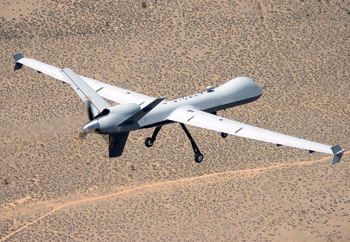INDIAN ARMED FORCES CHIEFS ON OUR RELENTLESS AND FOCUSED PUBLISHING EFFORTS

The insightful articles, inspiring narrations and analytical perspectives presented by the Editorial Team, establish an alluring connect with the reader. My compliments and best wishes to SP Guide Publications.

"Over the past 60 years, the growth of SP Guide Publications has mirrored the rising stature of Indian Navy. Its well-researched and informative magazines on Defence and Aerospace sector have served to shape an educated opinion of our military personnel, policy makers and the public alike. I wish SP's Publication team continued success, fair winds and following seas in all future endeavour!"

Since, its inception in 1964, SP Guide Publications has consistently demonstrated commitment to high-quality journalism in the aerospace and defence sectors, earning a well-deserved reputation as Asia's largest media house in this domain. I wish SP Guide Publications continued success in its pursuit of excellence.
- Indian Air Force Aims for Full Indigenous Inventory by 2047 — Air Chief Marshal A.P. Singh
- General Upendra Dwivedi takes over as the Chief of the Army Staff
- Rajnath Singh assumes charge as Defence Minister for the second consecutive term
- Admiral Dinesh K. Tripathi assumes Command of the Indian Navy as 26th Chief of the Naval Staff
- Prime Minister witnesses 'Bharat Shakti' – a Tri-Services Firing and Manoeuvre Exercise in Pokhran, Rajasthan
GA-ASI demonstrates electronic attack in USMC exercise

General Atomics Aeronautical Systems Inc. (GA-ASI) announced its successful demonstration of Predator B’s electronic attack capability at the US Marine Corp’s (USMC’s) Weapons and Tactics Instructor (WTI) course held at Marine Corp Air Station (MCAS) Yuma in Arizona.
“With this highly effective display of Predator B as a viable and capable EW platform, we are poised to provide even greater value as a multimission RPA solution for the Marines to address their EW requirements,” said Frank W. Pace, President, Aircraft Systems Group, GA-ASI.
The purpose of the demonstration was to evaluate the viability of a RPA to conduct electronic warfare missions against enemy air defences in support of tactical strike aircraft. GA-ASI participated with a company-owned Predator B RPA equipped with a jamming pod containing a Northrop Grumman digital receiver/exciter and controlled by a GA-ASI ground control station (GCS). Predator B was fully integrated into the advanced command and control (C2) networks and electronic warfare (EW) architecture of the exercise, with over 20 aircraft participating. The Northrop Grumman payload proved to be effective and seamlessly integrated with the Predator B avionics, command and control architecture.
Future demonstrations will expand on the success and lessons learned from the use of Predator B to execute a multi-node approach against a more capable integrated air defence system (IADS) in concert with other unmanned aircraft systems and EA-6B Prowlers in future training exercises. The focus of future demonstrations will be on a more integrated and networked EW capability, expanding the C2 network to direct the aircraft’s EW payload and other assets from the Cyber/Electronic Warfare Coordination Cell (C/EWCC) located at MCAS Yuma. “We are using multiple platforms in a networked approach to prosecute the IADS to protect our strikers as they hit their targets,” stated Major Charles Dudik, HQMC Aviation EW Requirements Officer. “It is a non-traditional approach to this problem set, but we believe this is where the future is headed for EW.”
A technologically advanced derivative of the combat-proven Predator, the multi-mission Predator B provides essential situational awareness for warfighters, excelling in combat missions focusing on intelligence, surveillance, and reconnaissance (ISR), precision strike on time-sensitive targets, close-air support (CAS), signals intelligence (SIGINT), forward air control (FAC), improvised explosive device (IED) detection, bomb damage assessment (BDA), and now airborne electronic attack.





